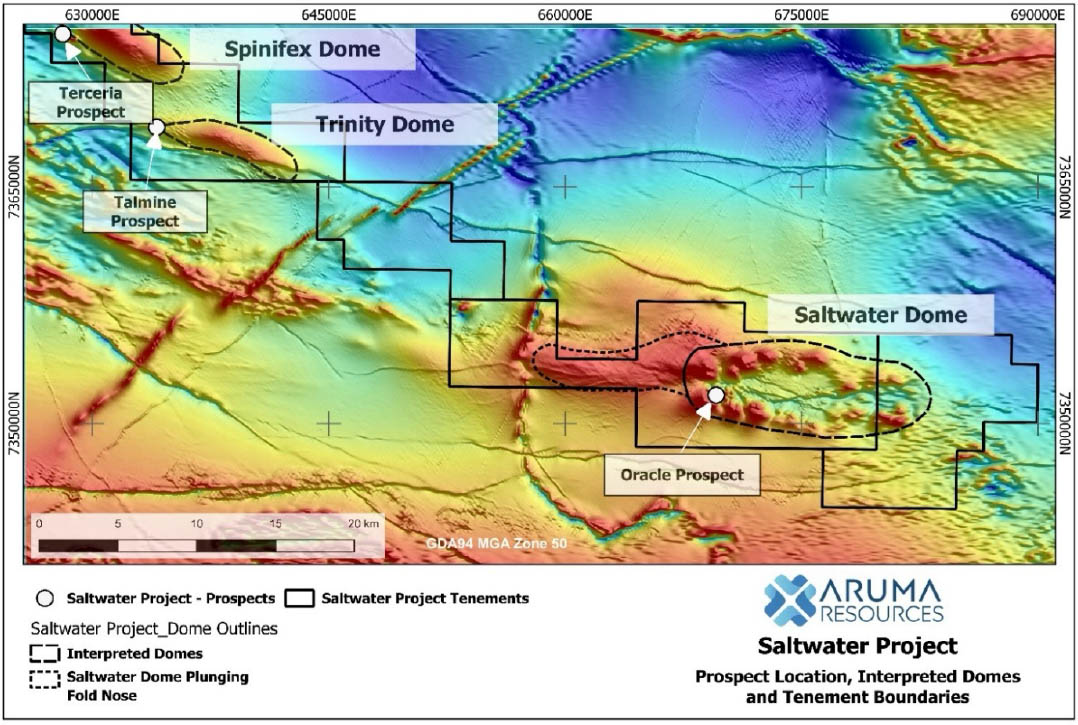Location: ~120 km southwest of Newman, Pilbara region, Western Australia
Tenements: EL52/3818, EL52/3846, EL52/3857, EL52/3966 – total area of 465 km²
Ownership: 100% Aruma Resources Ltd (ASX: AAJ)
Emerging multi-commodity asset with critical metals (gallium, REEs) and traditional target zones (gold, VMS-style base metals) prospectivity and strong discovery potential.
PROJECT OVERVIEW
The Saltwater Project consists of four Exploration Licences over a total area of 465km2. It is situated approximately 120 kilometres south-west of the regional mining centre of Newman, in the Pilbara region of WA. The Project is interpreted by Aruma to have multi-commodity potential including gold at Apoc Prospect and high-grade gallium at the Talmine Prospect, plus REE and base metals.
MULTI-COMMODITY POTENTIAL
Aruma has conducted multiple phases of targeted soil sampling as well as a hyperspectral survey to refine its exploration model for the Saltwater project and vector in on drill targets. Its systematic exploration along with assessment of historical exploration data has revealed compelling signs of polymetallic mineralisation:
Gold
Aruma delineated a geochemical gold anomaly at the Apoc Prospect with a strike length of approximately 300 metres and a width of 60 metres, coincident with an arsenic and gallium anomaly of approximately 800 metres strike and 120 metres in width. These coincident anomalies were identified from Aruma’s soil sampling programs and represent a drill-ready target.
Gallium
Very high-grade gallium results have been returned at the Talmine Prospect from Aruma’s sampling programs; a total of 16 samples have graded higher than 24g/t Ga2O3 with a highest result to date of 136.05g/t Ga2O3 in sample AR14023.
Battery Metals and Base Metals
Rock-chip sampling by Aruma has returned battery-grade manganese of up to 40% Mn, cobalt up to 0.36% Co, as well as iron, copper, lead, zinc, barium, arsenic, uranium, and vanadium anomalies.
Rare Earth Elements (REEs)
Surface sampling at the Inkwell Ridge Prospect has delivered elevated Total Rare Earth Oxides (TREO) up to 1,777.5ppm, including Neodymium–Praseodymium (NdPr) of 752.2ppm. Soil sampling has also confirmed promising TREO values including ~1,092.5ppm.


